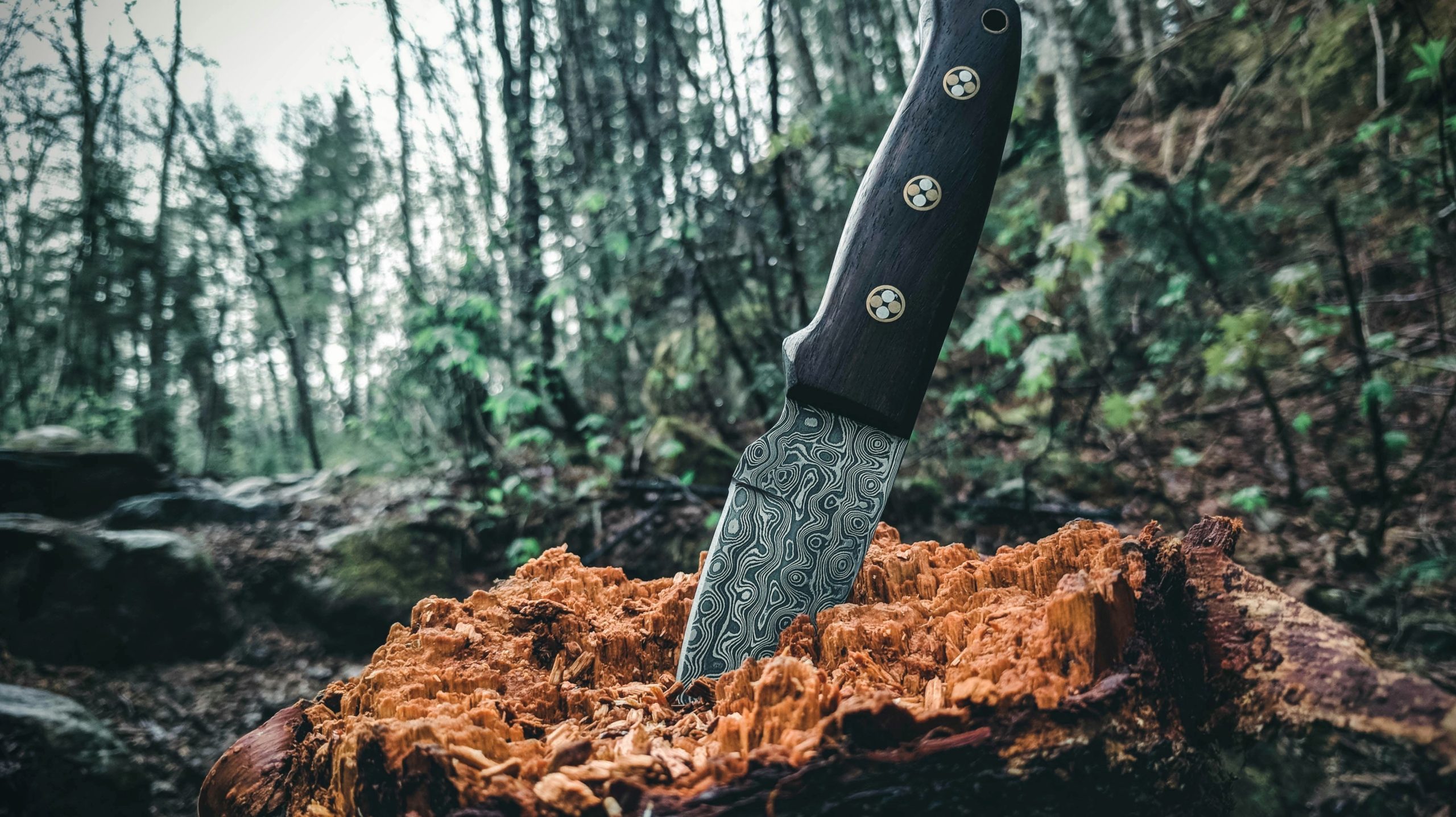Our customers often ask about how we make this steel so I will try to explain everything in my first post. I will keep it update by posting more related topics.
This steel refers to earlier style of craftsmanship that had started in India around 300 B.C ago. The art of making steel was very productive at that time and named after the region that make it more famous. The work Damascus has started back in medieval western cultures when the people lives in caves and most of the time depends on their similar weapons.
After some time Arab culture introduced Wootz steel to Damascus (A city of Syria) where this steel industry started to grow where fast. This steel made of several different layers of steels, which makes it harder and stronger. The mind behind this art was to make weapon, which cannot be broken with ordinary iron or regular steel.

Recommended Damascus steel knives at ShoppeHall
Even though Damascus steel is made of several layers of different material, still it has unique popularity due to its design pattern and mystery. The material is a combination of different brands that is molded and welded in such way that it creates very decorative pattern and shape. There is no exact evidence to proof the complicity and composition of Damascus steel. It is still unknown as of today; there is no evidentiary record available anywhere. So preparing the Damascus steel can contain different materials based on personal preferences.
If we look back, around 1700 A.D the popularity of Damascus steel has decreased with the passage of time but it has not forgotten. Even in modern world people still like Damascus steel and they want to have it for their needs or just for desire.
Composition of Damascus Steel
If we look back 50 years ago we will find that modern Damascus steel blades have been constructed from different types of material that are welded together to form a billets. In order to ensure firmness these billets built with layers and strips of iron. This billets stretched out at molecule level to increase the firmness of blade. The molding process really depends on personal preferences. Some people love to work with machines but most famous form of Damascus is handmade steel. The process is very simple as you are putting layers together in sandwich fashion. You can also add different type of other iron material to make it tough. This process makes the Damascus steel unique and ensure the integrity.
If we dive deeper in this process, we will know that carbon nanotubes form in the steel to allow malleability and sustained strength during the forging process. This carbon quantity ensures high performance and steel integrity.
The small steel particles formed into required shape of a blade, which creates unique patterns on each blade. These patterns reflect the ancient Indian culture and the style of production.
The Finishing Process of Blade
The heating treatment for Damascus steel includes a preset temperature between 1,400F and 2,500F, depending on the banding, and a mixture of both cementite and austerntite.
- Set temperature according to your requirements.
- Set metal block in the furnace. The heating process will begins.
- Soak into cold water for 10 minutes once it heated completely.
- Slake steel in oil. Leave it in liquid nitrogen for one hour.
- Temper steel for one hour at a temperature of 300-400F. Repeat the process at least two times
After completing the above process now follow the following steps
- Apply grit finish
- Mix ferric chloride and distilled water (50/50) and leave the blade in it for at least 10 minutes.
- Rinse blade in running water, use specific tap etc.
- Repeat the above process until you get desired results.
- Dip the blade in Tri-Sodium Phosphate once finished the process.
How to Make a Damascus Blade
Collect ingredients in a crucible. These ingredients contain glass and leaves known to prevent oxidation.
Heat crucible to dissolve the ingredients together. Safely remove the metal ingots once the crucible reached its cooling point. You should heat them to a forging temperature.
Hammer metal while it is hot. This stage includes “sandwiching” described above. After metal cools, reheat metal to forge again. Repeat this cycle as necessary to sharpen edges and shape the blade.
When the final shape is attained, cut the blade and hand-forge the final details. Shave away the carburized metal excess from the surface of the blade. Insert grooves and drill holes into the blade surface as needed or desired. Reheat. Hammer blade flat again. Polish to set the blade’s near-final form. Etch the surface of the blade with acid to enhance the pattern. When finished, clean acid thoroughly from surface of the blade.


Everything is very open with a very clear description of the issues. It was truly informative. Your site is useful. Thank you for sharing! Jenn Darwin Hindu